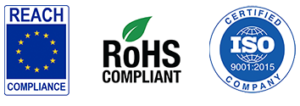In today’s market, electronic components are subjected to some pretty brutal environments that can drastically diminish the working life of electronic devices. However, manufacturers can take steps to reduce environmental and mechanical exposures by utilizing potting compound and encapsulation methods. Advancements in materials science have led to innovative solutions to protect sensitive electronic components from damage and prolong their life. Electronic potting uses these state-of-the-art materials to create a protective…
Paven PatelMarch 8, 2024


